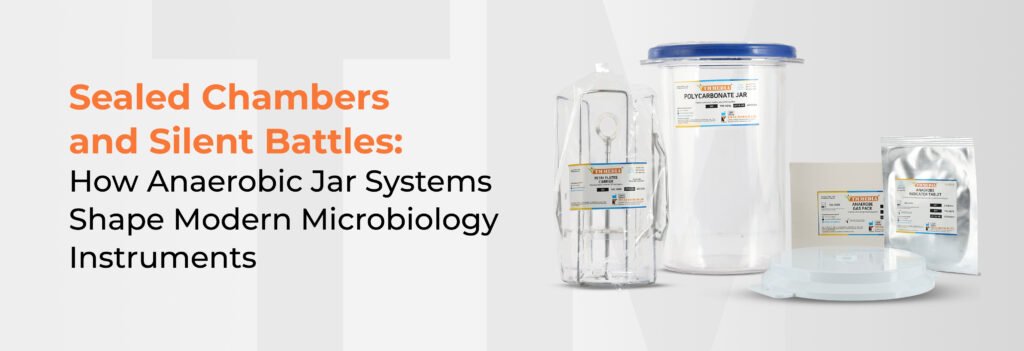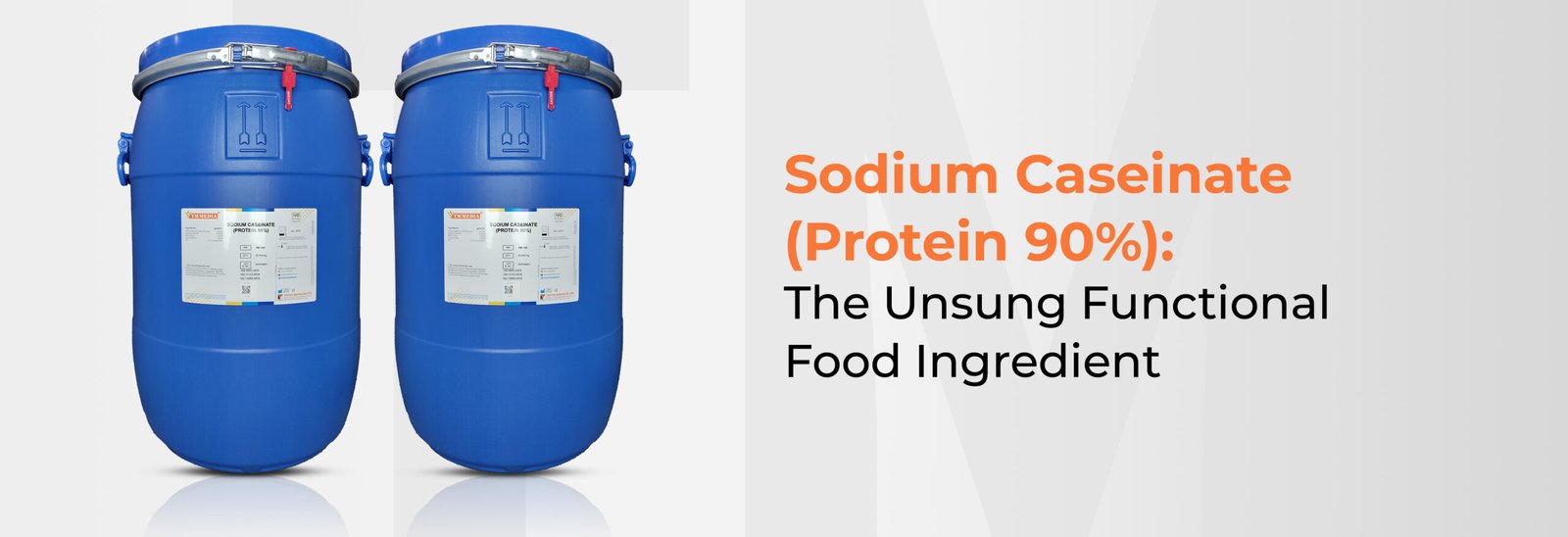

Imagine a pharmaceutical compound manufacturing facility struggling with contamination from undesirable aerobic bacteria. Production batches fail, quality checkpoints find hazardous microbial loads, and compliance with the regulators is a nightmare. The culprit? A seemingly simple oversight: the incapability to culture and identify anaerobic pathogens that thrive in oxygen-free environments. This is where the anaerobic jar system becomes an unsung hero in the world of microbiology instruments, converting sterile chambers into controlled atmospheres from which oxygen is completely excluded.
So, let’s get a closer view of this important microbiology instrument technology that makes your products safe, sterile, and compliant with worldwide regulations.
Anaerobic Jar System is important microbiology equipment that is airtight and used in the isolation of bacteria which cannot live in air. This system allows anaerobic organisms to perform growth safely and effectively in such industries as food processing, brewing, fermentation, bacterial research and so on.
By establishing a regulated anaerobic environment, the system enables sensitive bacteria to grow in the absence of oxygen, which may restrict their growth or induce cell death. Its reliability, ease of use, and reproducibility make it an indispensable tool for the laboratory of industrial microbiology, allowing producers to guarantee uniformity, efficiency and quality of their microbial processes.
Understanding how microbiology instruments function at a fundamental level helps manufacturing professionals appreciate their role in production workflows. The anaerobic jar system’s effectiveness lies in its four core components working in perfect harmony.
Polycarbonate Jar: The core of the system, the Polycarbonate Jar is rugged and airtight, keeping oxygen out. It features accurate gas control through inlet and outlet taps.
Petri Plate Carrier: Holds 10 Petri dishes or 8 culture tubes and ensures uniform gas flow for consistent anaerobic growth.
Anaerobic Gas Pack: Provides a modulated oxygen-free medium with hydrogen, carbon dioxide, and nitrogen. For larger jars, several packs may be combined.
Anaerobic Indicator Tablet: Tracks oxygen concentration in the container by a colour change: pink in an anaerobic environment, purple if oxygen is present, allowing the culture to be used with confidence.
The concept behind this microbiology instrument is elegantly simple and yet complex in its scientific nature. Anaerobic bacteria need an oxygen-free environment to live. The Polycarbonate Jar is based on the concept of evacuation and replacement. When air is removed from the jar, a controlled blend of gases, commonly containing carbon dioxide (CO2), hydrogen (H2) and nitrogen (N2), is added.
The sealed jar containing the Anaerobic Gas Pack eliminates the residual oxygen, and the Indicator Tablet provides a visual indication of the anaerobic state. If the tablet is still pink, the jar has been free of oxygen. Any discolouration to purple indicates that oxygen has entered the pack and needs to be investigated immediately.
Proper use of this microbiology instrument is important to ensure that results are true:
With these simple procedures, industries are able to sustain a regulated anaerobic condition which is vital to grow fastidious organisms and to achieve better dependability in microbiological testing and in fermentation.
While working with Anaerobic Gas Pack and Microbiology Lab Equipment, following precautions are important:
These precautions add security and long life to the equipment, and thus it becomes a dependable instrument for industrial microbiology.
The anaerobic jar systems for pharmaceutical manufacturers are a kind of microbiology instrument that can detect the absence of the harmful pathogen. In food production, they detect spoilage organisms that affect shelf stability. For the clinical laboratory, they permit diagnosis of life-threatening anaerobic infections that mandate specific antimicrobial therapy.
The dependability and ease of use of these microbiology instruments have established them as a necessary part of quality control procedures in a variety of industries. By investing in proper microbiology instruments and equipment for use in the microbiology lab, production facilities can be compliant with the regulations, keep products high quality, and keep consumers safe.
For the manufacturing sectors wanting to engineer dependable microbiology instruments, anaerobic jar system (TMC 013) is one of the best options available. Some of the advantages of TM Media’s system include:
A. it takes about 30 min to 1 h for the gas pack to generate an anaerobic atmosphere once it is activated; the size of the jar and the temperature potentially affect the duration of generation.
A. Anaerobic jars are employed to grow bacteria that are killed by air like Clostridium, Bacteroides and Fusobacterium. These are often studied in food, pharmaceutical, and clinical microbiology.
A. Yes, the polycarbonate jar and the plate carrier may be reused if they are properly cleaned and sterilized following each use. The gas pack and indicator tablet are disposable.
A. Yes, the polycarbonate jar and the plate carrier may be reused if they are properly cleaned and sterilized following each use. The gas pack and indicator tablet are disposable.
A. Be sure the jar is well sealed when you are ready to activate it, stay away from the chemicals in the gas pack, and please handle the jar with care when you are pressurizing or depressurizing it.
A. It depends on the organism, but most anaerobes grow well at 35-37°C in the conventional incubators.

Imagine this: your body is a fort, defended by walls, guards, and intricate defences. But occasionally, raiders slip through the...
Read More
Think about, you are cooking food for loved ones. You’d wash your hands, clean the utensils, and make sure everything...
Read More
Some secrets are not written in books but brewed in cells too small to see. Just as a cook adds...
Read More
Ever flipped a nutrition label and set foot in a food lab, you have probably come across a name that...
Read More
In clinical and investigative microbiology, loeffler serum slope has been crucial in the isolation and investigation of Corynebacterium diphtheriae, the...
Read More